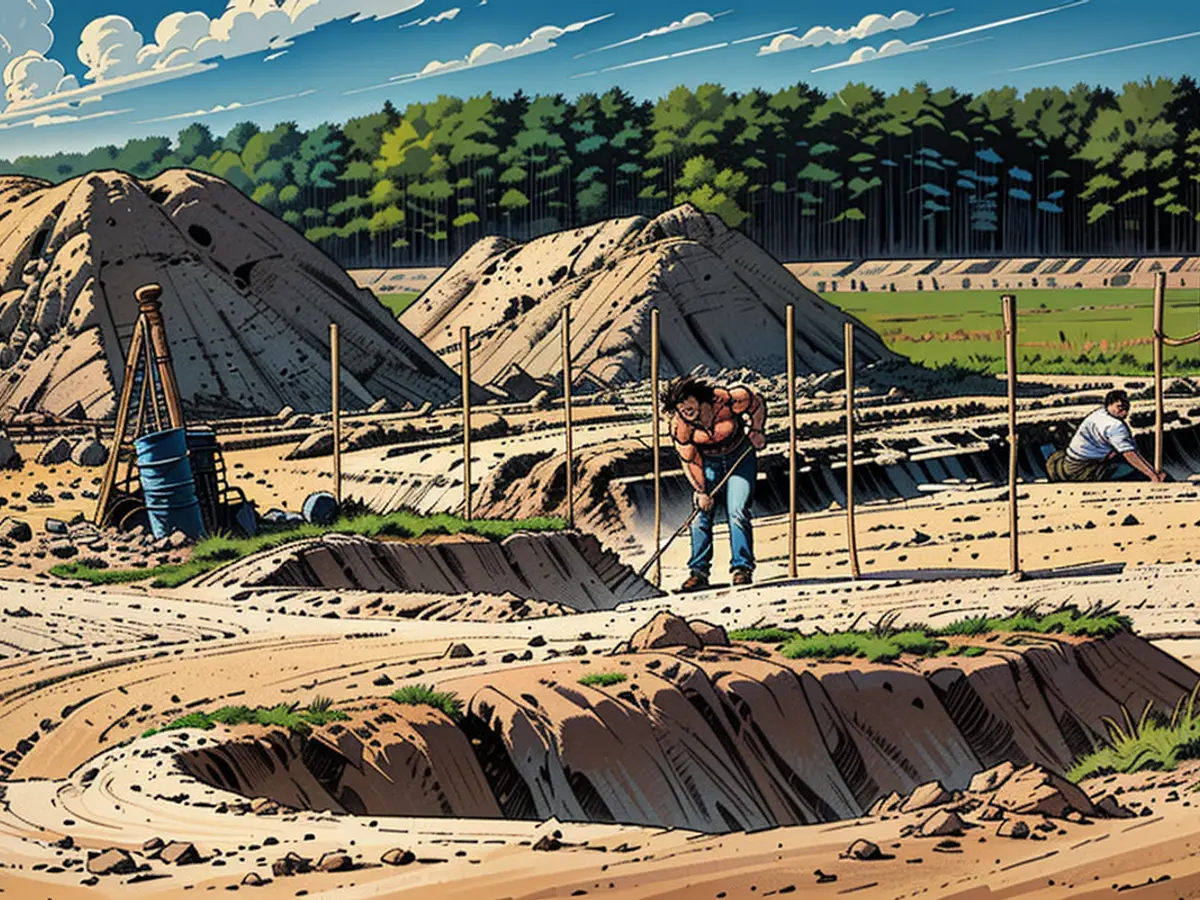Archaeologists unearth an ancient Bronze Age dwelling in Brandenburg.
In the 1800s, the famous "King's Tomb" in Seddin, Brandenburg was found. This tomb is regarded as one of the most significant from the Bronze Age. Lately, archaeologists have stumbled upon a settlement close by. The excavation chief describes it as a "jam-packed area of houses."
Near the "King's Tomb" in northwest Brandenburg, archaeologists have found a densely populated settlement from the Bronze Age. So far, the remains of seven houses have been discovered, forming a circle around the massive "Hall of the King," which was discovered last year.
Brandenburg's chief archaeologist, Franz Schopper, called the discovery a "pleasant surprise" and a "jam-packed area of houses." As per the excavation leader Immo Heske from the University of Göttingen, this is packed construction on an area of about 2,000 square meters. Around 200 to 300 people are thought to have lived here simultaneously.
Most of them were carpenters, metal casters, and other craftsmen, as well as farmers. Heske states that the settlement existed for about 200 years, roughly between 1000 and 800 BC. There are no signs of further settlement in subsequent eras. The internationally renowned "King's Tomb" in Seddin was discovered 125 years ago, in 1899.
According to legend, a King Hinz is buried there. It is considered the most significant tomb of the 9th century BC in northern Central Europe. The "King's Tomb" and its surroundings in the Prignitz district have been studied for years. The "Hall of the King" discovered last year is considered the largest known hall of the Nordic Bronze Age, according to the state office for heritage management.
The historical significance of the Bronze Age settlement near the "King's Tomb" in Seddin is being uncovered by archaeologists. This new finding adds valuable context to our understanding of the civilization that inhabited the area around the famous tomb.
Given the wealth of artifacts and structures found in this historical settlement, it's clear that this was a bustling and thriving community during the Bronze Age.







